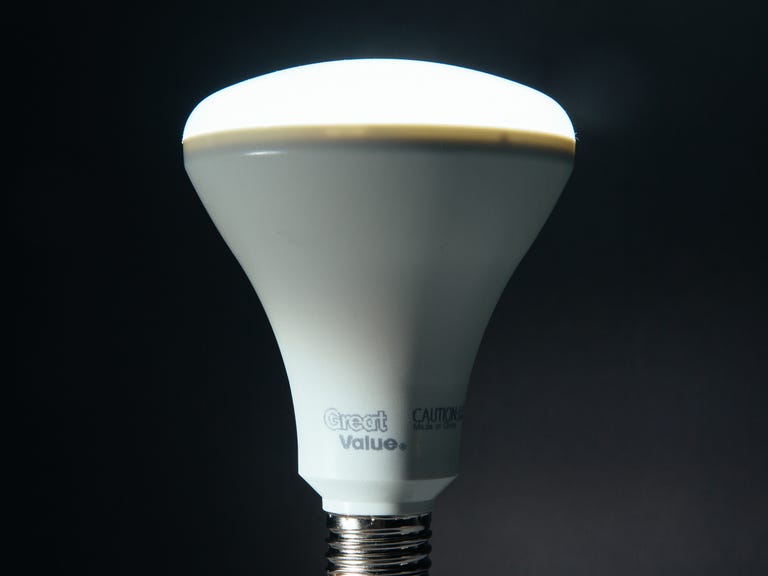 Why You Can Trust CNET
Why You Can Trust CNET Walmart Great Value 65W Replacement BR30 LED Floodlight review: This Walmart store-brand floodlight LED just isn't very good
With mediocre efficiency and dodgy dimming performance, this store-brand LED floodlight isn't one we'd recommend.
Walmart sells a growing lineup of LED light bulbs under the "Great Value" brand name. They're really just rebranded bulbs from an established company called TCP, and some of them are actually pretty darned good. The Great Value floodlight LED, however, is not one of them. In fact, it's pretty darned bad.
The Good
The Bad
The Bottom Line
Here's the problem: at a retail price of $7, the Great Value floodlight LED is more expensive than the Philips floodlight LED, a bulb that beats it at pretty much every turn. In fairness, I picked up my test bulb on sale at Walmart for closer to $5, but even at that price, this is a bulb I'd recommend skipping.
The biggest flaw here is the dimming performance. I test each LED I review on a couple of different dimmer switches, and I wasn't able to dial the Great Value LED down below 20 percent on any of them. On one switch, a Lutron slider designed for use with LEDs, I couldn't even get it down below 50 percent, which is flat-out terrible. It did only slightly better on an old rotary dial, dropping down to a still-very-bad 40 percent -- and not without plenty of noticeable flicker. Don't buy this bulb if you're planning on dimming it.
The bulb makes a little more sense if you don't need it to dim, but it's still not a great pick. With 669 lumens to its name, it's a hair brighter than advertised, which is good, but it uses a power draw of 10 watts, which means it's only putting out about 67 lumens per watt. By comparison, that 9W Philips bulb gets comfortably above 70 lumens per watt, while the 8W Cree floodlight LED gets up above 80 lumens per watt. It's a nitpick, to be sure, but a legitimate one if efficiency is what you're after.
The Walmart Great Value LED (green) lost more than 15 percent of its initial brightness to heat buildup. That's a very mediocre result.
Heat is another issue. Like most electronics, LED light bulbs will see their brightness dip a bit as they heat up during the first 30 minutes or so of use. From there, the heat sinks should kick in and stabilize things (which, by the way, is the point at which testers like me take our final brightness readings). The Great Value LED is no different, but it stabilized much lower than bulbs from Cree and GE did, and ultimately lost an unimpressive 15.8 percent of its initial brightness to heat buildup. That's indicative of a cheaply made bulb, and one that you would ideally avoid using in an enclosed fixture that traps heat.
The Great Value LED does offer surprisingly good color rendering performance, but that's not enough for me to recommend it over something with fewer shortcomings. You'll find plenty of better options from GE in that same Walmart lighting aisle, and if you head over to Home Depot, floodlights from Philips and Cree are potentially even stronger choices. For more buying guidance, check out my full rundown of your LED floodlight options.


